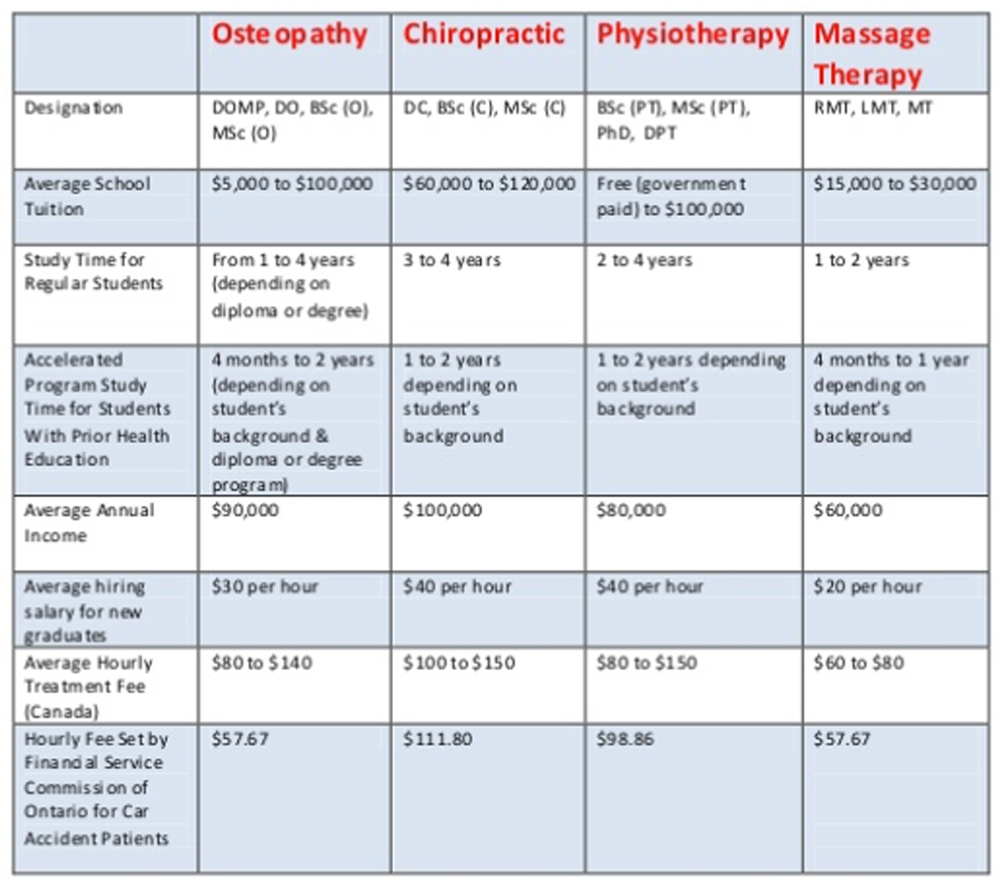The Provision of Chiropractic, Physiotherapy and Osteopathic Services Within the Australian Private Health-care System: A Report of Recent Trends
SOURCE: Chiropractic & Manual Therapies 2014 (Jan 15); 22 (1): 3
Roger M Engel, Benjamin T Brown, Michael S Swain, and Reidar P Lystad
Department of Chiropractic,
Macquarie University,
Balaclava Rd, North Ryde 2109,
Australia.
BACKGROUND: Chiropractors, physiotherapists, and osteopaths receive training in the diagnosis and management of musculoskeletal conditions. As a result there is considerable overlap in the types of conditions that are encountered clinically by these practitioners. In Australia, the majority of benefits paid for these services come from the private sector. The purpose of this article is to quantify and describe the development in service utilization and the cost of benefits paid to users of these healthcare services by private health insurers. An exploration of the factors that may have influenced the observed trends is also presented.
METHODS: A review of data from the Australian Bureau of Statistics, Australian Health Practitioner Regulation Agency, and the Australian Government Private Health Insurance Administration Council was conducted. An analysis of chiropractic, physiotherapy and osteopathic service utilisation and cost of service utilisation trend was performed along with the level of benefits and services over time.
RESULTS: In 2012, the number of physiotherapists working in the private sector was 2.9 times larger than that of chiropractic, and 7.8 times that of the osteopathic profession. The total number of services provided by chiropractors, physiotherapists, and osteopaths increased steadily over the past 15 years. For the majority of this period, chiropractors provided more services than the other two professions. The average number of services provided by chiropractors was approximately two and a half times that of physiotherapists and four and a half times that of osteopaths.
There are more articles like this @ our:
CONCLUSIONS: This study highlights a clear disparity in the average number of services provided by chiropractors, physiotherapists, and osteopaths in the private sector in Australia over the last 15 years. Further research is required to explain these observed differences and to determine whether a similar trend exists in patients who do not have private health insurance cover.
Keywords: Chiropractic, Physiotherapy, Osteopathy, Allied health, Healthcare utilisation
From the Full-Text Article:
Introduction
In Australia health care costs are covered by the private and public sectors. In 2009–2010 the private health insurance sector provided $13.5 billion towards the total cost of the Australian health care system. This represented about 12% of total health funding. [1] These funds came from two sources: insurance premium payments by members ($9.2 billion) and premium rebates from the Australian Government ($4.3 billion). Of the $9.2 billion paid by members, 5.3% went to payment for non-hospital, non-medical treatment such as chiropractic, physiotherapy and osteopathic services.
Australian chiropractors, physiotherapists and osteopaths are all trained to diagnose and treat musculoskeletal (MSK) conditions. [2–4] It is therefore reasonable to assume a degree of overlap in the types of conditions treated by each of these professions. A recent cross-sectional study of chiropractors from Victoria, Australia reported that MSK conditions were the most common reason for patients seeking chiropractic care. Chiropractors who participated in the study stated that MSK conditions were the main reason for the practitioner-patient encounter in 60 per 100 encounters (95% CI, 54–67 per 100 encounters). [5] The Australian Physiotherapy Association’s ‘Scope of Practice’ states that physiotherapy involves the prevention, diagnosis, and management of movement disorders that involve the MSK system. [6] In addition, physiotherapists also provide other services including, but not limited to, post-fracture, post-surgery and pre- and post-natal care. It is a similar scenario for osteopaths with nine of the twelve conditions listed under ‘Treatment’ by the Australian Osteopathic Association being MSK in nature. [3]
Musculoskeletal conditions such as back and neck pain cause significant disability and loss of productivity and represent a considerable portion of healthcare expenditure in Australia. The Global Burden of Disease study 2010 ranks low back pain and neck pain first and third respectively in Australasia as the cause of years lived with disability. [7] The prevalence of these conditions increases up to the age of 60 [8] and the demand for health care services associated with managing them is likely to increase significantly over the next three decades. It is therefore important to quantify and describe current trends in service utilisation in order to assist future planning of healthcare service provision and expenditure.
In Australia, the provision of chiropractic, physiotherapy and osteopathic services is driven by a number of factors that can be classified as internal or external. Internal factors encompass graduate capabilities, code of conduct and self-regulated professional behaviour and practice, while external factors include government legislation, private health insurance policies, individual/community preference, population demographics, economic circumstances such as the level of household disposable income and the health status of the population. [9] These factors operate in a state of dynamic equilibrium, whereby change in one factor produces an alteration in one or more of the others. Understanding the dynamics of these changes is not always straightforward. The aims of this article are to A) quantify and describe developments in service utilisation and total cost of service benefits for chiropractic, physiotherapy and osteopathic services in the Australian private health sector, and B) to discuss factors that may account for any observable trends in the development.
Read the rest of this Full Text article now!






Leave A Comment